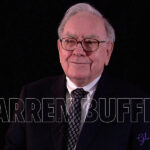Bernard Arnault: Bio, History, and Business Path

Bernard Arnault is a name synonymous with luxury, power, and immense wealth. As the chairman and CEO of LVMH (Moët Hennessy Louis Vuitton), Bernard Arnault has built an empire that transcends industries, from fashion and retail to hospitality and fine wines. His incredible success story is a testament to visionary leadership, calculated risks, and an unparalleled understanding of the luxury market. In this article, we delve into the biography, history, and the business path that led Bernard Arnault to become one of the richest men in the world.
Early Life and Education: The Foundation of Success
Born on March 5, 1949, in Roubaix, France, Bernard Arnault grew up in a family that had a strong presence in the construction industry. His father, Jean Arnault, was a manufacturer, and Bernard’s early exposure to business likely had a profound influence on his later career. He attended the prestigious École Polytechnique in Paris, one of France’s top engineering schools, where he earned a degree in civil engineering.
Although his education was in engineering, Arnault’s entrepreneurial spirit was ignited early on. After completing his studies, he joined his father’s construction company, Ferret-Savinel, and quickly rose through the ranks, showcasing his leadership and vision. However, it was not long before Arnault realized that his ambitions lay beyond the construction industry.
The Strategic Move to LVMH: A Masterstroke
In 1984, Bernard Arnault made a pivotal decision that would forever change the trajectory of his career. He acquired a controlling stake in LVMH, a luxury goods conglomerate, at a time when the company was struggling. LVMH was created through the merger of Moët Hennessy and Louis Vuitton in 1987, but it wasn’t the powerhouse brand we know today.
Arnault’s strategic vision and meticulous leadership were crucial in transforming LVMH into the global luxury giant it is today. He used his expertise in management and finance to streamline operations and expand the brand’s global reach. Under his stewardship, LVMH embarked on a series of high-profile acquisitions, which helped diversify its portfolio and solidify its dominance in the luxury sector.
Acquisitions That Defined Arnault’s Legacy
Arnault’s business strategy was centered around acquiring and nurturing world-renowned luxury brands. Through LVMH, he successfully acquired some of the most iconic names in fashion and beyond, including:
- Christian Dior (1999): This acquisition brought one of the most prestigious names in fashion under LVMH’s umbrella, enhancing the conglomerate’s influence in the luxury fashion industry.
- Fendi (2001): The acquisition of the Italian fashion brand Fendi further solidified Arnault’s position in the high-end fashion market.
- Sephora (1997): This beauty retailer was a key addition to LVMH’s portfolio, creating synergies between fashion, beauty, and retail, and positioning LVMH as a leader across multiple sectors.
- Tiffany & Co. (2020): The acquisition of this iconic American jewelry brand for $16 billion was a significant milestone in Arnault’s career, bolstering LVMH’s position as the undisputed leader in the luxury market.
Each acquisition was made with a clear strategy in mind: expanding LVMH’s portfolio while maintaining the individual brand identities and exclusivity that are essential to luxury. Arnault’s management style, which emphasizes both creativity and operational efficiency, has been key to LVMH’s continued success.
The LVMH Business Model: Innovation Meets Tradition
At the heart of LVMH’s success under Bernard Arnault is the business model that blends tradition with innovation. Arnault has always understood that luxury is not just about the products themselves but the experience and exclusivity that they represent. He has consistently nurtured the brands under the LVMH umbrella, giving them the freedom to innovate while preserving their unique identities.
This model has allowed LVMH to maintain a leadership position in the luxury market, even during economic downturns. The company’s focus on high-quality craftsmanship, innovation, and an unwavering commitment to exclusivity ensures that its brands remain desirable to the world’s wealthiest consumers.
In addition to the traditional luxury goods, Arnault has also expanded into other sectors, such as fine wines, spirits, and hospitality, allowing LVMH to diversify its income streams. Brands such as Moët & Chandon, Dom Pérignon, and Krug have played a pivotal role in LVMH’s financial success, further cementing Arnault’s reputation as a shrewd businessman with a keen eye for opportunity.
Bernard Arnault’s Wealth and Influence: A Global Powerhouse
As of recent years, Bernard Arnault consistently ranks among the wealthiest individuals in the world. His net worth fluctuates, often surpassing $200 billion, placing him at the top of global wealth rankings, alongside figures like Elon Musk and Jeff Bezos. Arnault’s immense fortune is not just a byproduct of his ownership of LVMH, but also his ability to adapt to market trends and maintain a long-term vision for his empire.
Beyond his business ventures, Arnault has also positioned himself as a key influencer in the global economy. His presence in the luxury sector has a ripple effect on fashion, retail, and even art, as he has been known to invest in contemporary artists and institutions. Through the Louis Vuitton Foundation, Arnault has demonstrated his commitment to supporting the arts, further elevating his stature in the global cultural and business landscape.
Philanthropy: Bernard Arnault’s Commitment to Giving Back
While Bernard Arnault is often perceived as a formidable business magnate, he has also been active in philanthropic efforts. He has made significant contributions to causes such as education, healthcare, and the arts. His charitable foundation, the Louis Vuitton Foundation, promotes contemporary art and supports emerging artists, contributing to cultural development worldwide.
Moreover, during the COVID-19 pandemic, LVMH stepped up by converting its perfume factories into hand sanitizer production facilities, showing Arnault’s ability to pivot in times of crisis while maintaining the company’s commitment to social responsibility.
The Legacy of Bernard Arnault: A Visionary Entrepreneur
Bernard Arnault’s rise to prominence is a story of visionary entrepreneurship. His relentless pursuit of excellence, coupled with a keen sense of market timing, has allowed him to build one of the most powerful conglomerates in the world. Arnault’s story demonstrates that with the right mix of creativity, strategy, and risk-taking, it is possible to reshape industries and create lasting value.
As LVMH continues to expand and innovate, Bernard Arnault’s legacy is poised to endure for generations. His influence on the luxury market, in particular, will remain a benchmark for future entrepreneurs who aspire to build global empires.
Global Leaders View: A Testament to Business Acumen
Bernard Arnault’s biography is more than just the story of one man’s rise to immense wealth. It is a testament to the power of strategic thinking, relentless ambition, and the ability to adapt to changing markets. From his humble beginnings to becoming a global icon in the luxury industry, Arnault’s journey underscores the importance of vision and leadership in building a business empire.
With LVMH continuing to lead the charge in the luxury market, Bernard Arnault remains a defining figure in the world of business and beyond. His story is one that will inspire entrepreneurs for years to come, offering invaluable lessons in management, innovation and leadership.
Recent Posts
Related Articles
Milan Dordevic: Navigating Two Decades of Innovation and Leadership Internationally Across Industries
You’ve got to be serious at some things, at a particular age,...
ByGlobal Leaders ViewFebruary 5, 2025Yossi J Amuial: Steering the Course of Innovation and Excellence at Executive Tag & Title Svcs, Inc.
In the vast sea of leadership, true leaders emerge not by just...
ByGlobal Leaders ViewFebruary 5, 2025Lisa Anna Palmer: A Journey of Empowerment, Vision, and Impact
You can hate more but you can never love less. The hope...
ByGlobal Leaders ViewFebruary 5, 2025Krystn Macomber: From Athlete to Entrepreneur: The Journey of a Visionary CEO
Krystn Macomber knows winning. Going back to her days as a D1...
ByGlobal Leaders ViewFebruary 5, 2025














Leave a comment